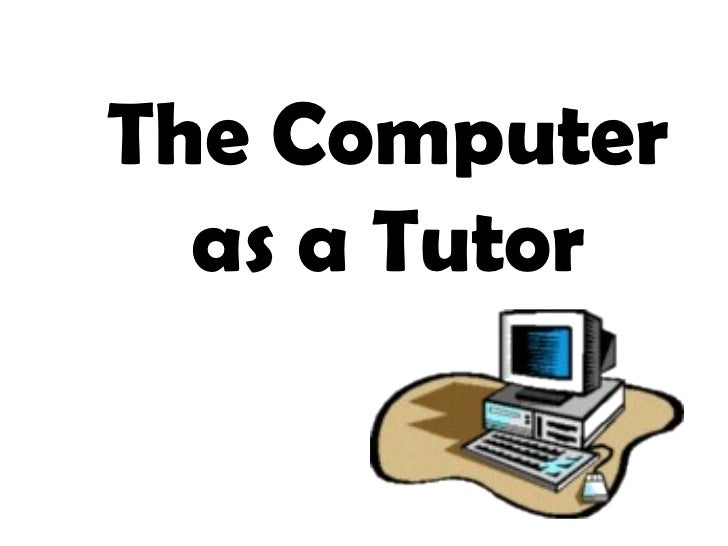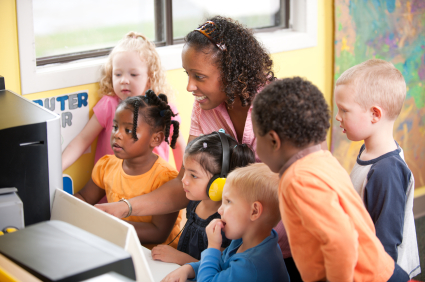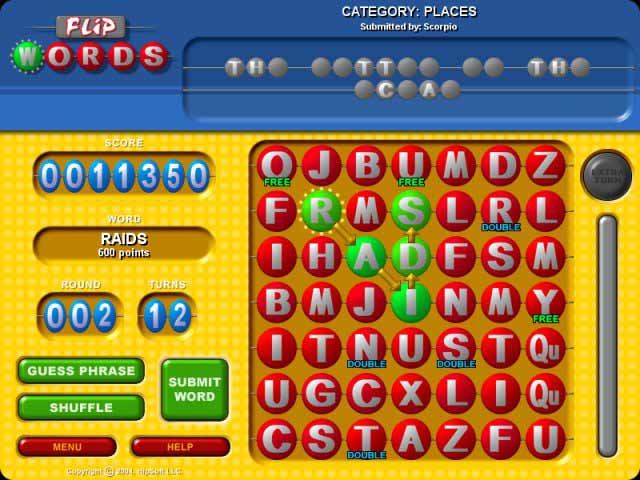
The computer is one of the wonders of human ingenuity, even in its original design in the 1950s to carry out complicated mathematical and logical operations. With the invention of the microcomputer ( now also commonly referred to PCs or personal computers), the PC has become the tool for programmed instruction.
Educators saw much use of the PC. It has become affordable to small business, industries and homes. They saw its potential for individualization in learning, especially as individualized learning is a problem since teachers usually with a class of forty one or more learners. They therefore devised strategies to use the computer to break the the barriers to individualized instruction.
Computer-assisted instruction (CAI)
The computer can be a tutor in effect relieving the teacher of many activities in his personal role as classroom tutor. It should be made clear, however, that the computer cannot totally replace the teacher since the teacher shall continue to play the major roles of information deliverer and learning environment controller. Even with the available computer and CAI software, the teacher must:
- Decide the appropriate learning objectives.
- Plan the sequential and structured activities to achieve objectives.
- Evaluate the students' achievement by ways of tests the specific expected outcomes.

On the other hand, the students in CAI play their own roles as learners as they:
- receive information.
- understand instructions for the computer activity
- retain/keep in mind the information and rules for the computer activity
- apply the knowledge and rules during the process of computer learning.
During the computer activity proper in CAI the computer, too, plays its role as it:
- acts as a sort of tutor ( the role traditional played by the teacher)
- provides a learning environment.
- delivers learning instruction.
- reinforces learning trough drill-and-practice.
- provides feedback.

Today, educators accept the fact that the computer has indeed succeeded in proving an individualized learning environment so difficult for a teacher handling whole classes. This is so, since the computer is able to allow individual students to learn at their own pace, motivate learning through a challenging virtual learning environment, assist students through information needed during the learning process, evaluate student responses through immediate feedback during the learning process, and also given the total score to evaluate the student's total performance.
 CAI Integrated with Lessons
CAI Integrated with LessonsCAI computer learning should not stop with the drill and practice activities of students. In effect, CAI works best in reinforcing learning through repetitive exercises such that students can practice basic skills or knowledge in various subject areas. Common types of drill and practice programs include vocabulary building, math facts, basic science, and history or geography facts. In these programs, the computer presents a question/problem first and the student is asked to answer to the question/problem. Immediate feedback is given to the student's answer. After a number of practice problems and at the end of the exercise, the students get summary of his overall performance.
The question arises: When and how can teachers integrate drill and practice programs with their lessons?
The following suggestions can be made:
- Use drill and practice programs for basic skills and knowledge that require rapid or automatic response by students (e.g. multiplication table, letter and word recognition, identification of geometric shapes, etc.)
- Ensure that drill and practice activities conform to the lesson plan/curriculum.
- Limit drill and practice to 20-30 minutes to avoid boredom.
- Use drill and practice to assist students with particular weakness in basic skills.
While practice, exercise or learning-by-doing is still the heart of each tutorial, the tutorial software should be able to:
- teach new content/new information to students (inasmuch as CAI provides practice on old or already learned content).
- provide comprehensive information on concepts in addition to practice exercises.
- can be effectively used for remediation, reviewing, or enrichment.
- allow the teacher to introduce follow-up questions to stimulate students learning.
- permits group activity for cooperative learning.
SIMULATION PROGRAMS
Simulation software materials are another kind of software that is constructivist in nature. These simulation software:
- teaches strategies and rules applied to real-life problems/situations.
- asks students to make decision on models or scenarios.
- allows students to manipulate elements of a model and get the experience of the effects of their decisions.
INSTRUCTIONAL GAMES

While relating to low-level learning objectives, instructional computer games add the elements of competition and challenge.
An example is GeoSafari which introduces adventure activities for Geography History and Science. The program can be played by up to four players to form teams. learning outcomes can be achieved along simple memorization of information, keyboarding skills, cooperation and social interaction, etc.
PROBLEM SOLVING SOFTWARE
These are more sophisticated than the drill and practice exercises and allow students to learn and improve on their problem solving ability. Since problems cannot be solved simply by memorizing facts, the students, have to employ higher thinking skills such as logic, recognition, reflection, and strategy-making.
The Thinking Things 1 is an example of a problem solving software in which the team learners must help each other by observing, comparing.
MULTIMEDIA ENCYCLOPEDIA AND ELECTRONIC BOOKS

The Multimedia Encyclopedia can store a huge database with texts, images, animation, audio and video. students can access any desired information, search its vast contents, and even download/print relevant portions of the data for their composition or presentation. An example is the eyewitness Children's Encyclopedia.
Electronic books provide textual information for reading, supplemented by other types of multimedia information. These are useful for learning reading, spelling and word skills. Examples are just Grandma and Me animated storybook which offer surprises for the young learner's curiosity.










